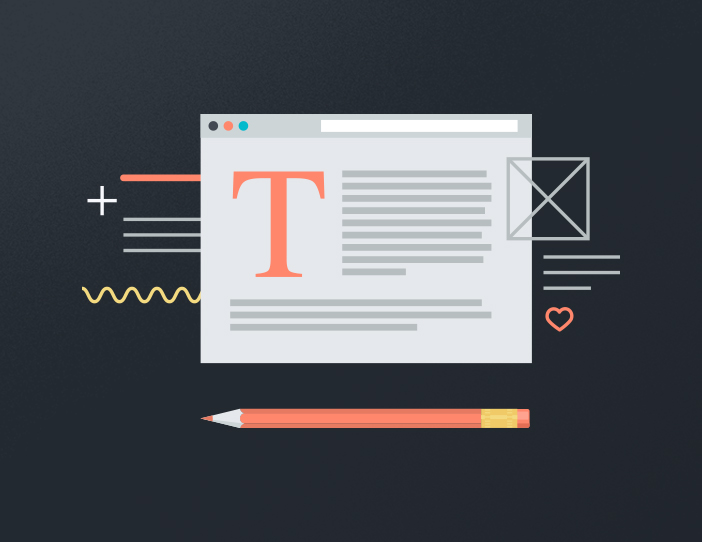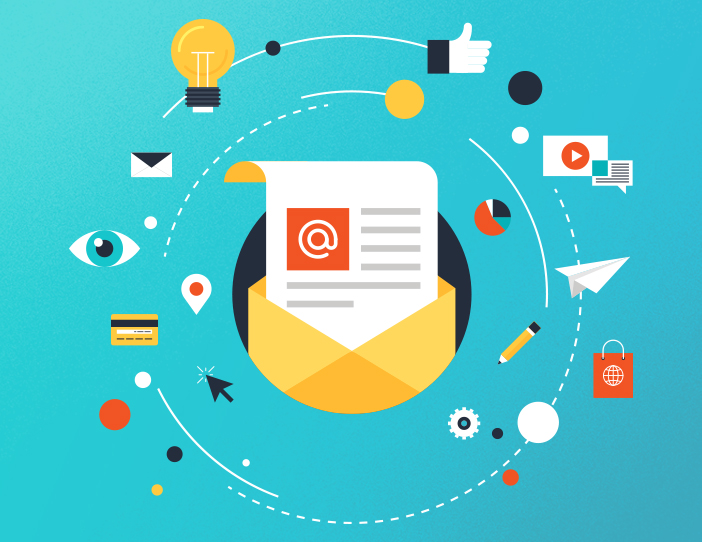
Email is a wonder of the marketing world.
Why? First, it’s effective, especially compared to other marketing channels. The latest stats (from Campaign Monitor) say it returns $44 for every dollar you invest in it.
Second, it’s cheap or free to get started, which makes it ideal for small businesses and entrepreneurs.
And last, it’s both direct and personal, giving you a chance to connect with practically everybody. I mean, who doesn’t have an email address?
But if you’re like most of us, you face a bit of “resistance” when you sit down to create an email. As a result, you don’t email your audience consistently. Or you create and send something slapdash, which produces less-than-stellar results.
To simplify this, I’ve created a short Q&A you can work through any time you need to send an email. A lot of the hard work of building an email is clarifying your thinking and editing out clutter, and this series of questions will help you do it. I’ve also included a few examples to show you how some made-up businesses might answer each question.
Go through this process when it’s time to send an email, and you’ll have the kind of focus you need to craft an email that really resonates with your readers.
1. What’s the big idea I want my audience to understand?
In any good story, clarity and focus are key. Take the movie The Bourne Identity, for example. Jason wants to figure out his backstory. Through all the twists and turns of the plot, the movie still focuses on that big idea. If Jason wanted to figure out his backstory but also pay off his student loans and become a world-class baker, the story would quickly spiral out of control.
Your customers are scrolling through an average of 121 messages a day. Your email is just one of them, and even a moment of confusion will get your email sent straight to the “deleted” folder.
Good stories have focus, and focus is critical in your emails, too. Your customers are scrolling through an average of 121 messages a day. Your email is just one of them, and even a moment of confusion will get your email sent straight to the “deleted” folder.
If you only answer one question on this list, make it this one. Ask yourself why you’re sending this email. You may list a few reasons at first, but get ruthless and stay focused on one big idea.
When you do, you’ll make your emails clearer, shorter, and more meaningful to your reader.
Examples:
Online photographer: It’s the last day to register for our photography course
Marketing consultant: We just opened up 15 coaching sessions
Clothing boutique: We just published a new blog post with 5 ideas for styling your new jeans for fall
2. What’s the single most important action my customers can take when they get this email?
Whether it’s in an email or on our website, we want to give customers a very clear path toward solving a problem — whether that’s to buy, register, signup, schedule an appointment, order, or call.
By way of example, the WordStream blog featured a split-test email from Sonicare. They sent two versions to their audience and compared the results. The first version, with a single call to action, radically out-performed the version with multiple calls to action: clicks went up 371% and sales an unreal 1617%.
Of course your mileage may vary, but even if you have multiple calls to action, make sure you’ve created a primary call to action that stands out in the design and corresponds with the big idea you outlined in the first question.
You’ll be amazed how many readers will follow a path, simply because you’ve marked it clearly and asked them to take it.
You’ll be amazed how many readers will follow a path, simply because you’ve marked it clearly and asked them to take it.
Examples:
Online photographer: Register now
Marketing agency: Schedule my consultation
Clothing boutique: Read the post
3. How do my readers benefit when they take action?
Have you heard the acronym WII-FM?
It’s tossed around frequently enough in the marketing world. It stands for “What’s In It For Me.” Everyone you email is tuned into “WII-FM” — their own radio frequency of whatever matters to them. Like all of us, your email readers are asking (in the back of their minds), “How can this benefit me and make my life better or easier?”
So your email needs to clearly express this. What good things will happen when your reader takes action? What bad things will they avoid? How will their life get better? Depending on what you’re offering, you might also want to spell out the risks of not taking action.
Start with an understanding of your audience for this email. What do they want? What do they struggle with? How can this email solve that problem?
Once you have clarity on this, you can express in it your emails in a way that suits your aims and your brand. It might be a simple headline or a full sales letter. But in either case, you’ll be able to articulate the benefit to your audience so they know “what’s in it for me.”
Examples:
Online photographer:When they buy our photography course, they’ll learn to capture their family vacations beautifully. They’ll be able to relive their memories and cherish them for years. Without it, they’ll just end up with a bunch of lackluster, grainy shots that don’t really do their trip justice.
Marketing agency: When customers book a consultation, they’ll feel confident because they have a proven plan to make their marketing effective.
Clothing boutique: When customers read our post, they’ll feel empowered and inspired to put together great-looking fall outfits with their new jeans.
4. What kind of image shows those benefits in action?
Neuroscientists at MIT found that, in little as 13 milliseconds (!), our brains can identify an image.
And what you see in that split-second influences what your brain wants to do next. Mary Potter, the study’s lead scientist, elaborated on the findings: “The job of the eyes is not only to get the information into the brain, but to allow the brain to think about it rapidly enough to know what you should look at next.”
A powerful, well-chosen image can persuade customers to keep looking at your email — to stop the scroll on their smartphone and actually read what you have to say.
What does that mean for us as marketers? A powerful, well-chosen image can persuade customers to keep looking at your email — to stop the scroll on their smartphone and actually read what you have to say.
Find images that instantly communicate the benefits that you’ll be spelling out in your copy. You’ll snag the attention of your readers and draw them into the rest of your email.
Examples:
Online photographer: A couple on their couch looking a photo album of beautiful exotic photos
Marketing agency: Before-and-after screenshots of a redesigned website from an existing client
Clothing boutique: A woman confidently walking down the street rocking one of the looks outlined in the blog
5. Optional: What proof do I have that my customers’ lives will be better when they take action?
You can answer every question on this list perfectly, but ultimately people won’t buy from you if they don’t trust you.
There’s more than one way to build trust with your customers, of course, but one way is to point to someone outside your business who can vouch for you.
In the marketing world, we call it “social proof,” but essentially, you want to show customers that others have experienced the benefits you’re promising them. It’s not necessary to include in every email, but if your email audience is relatively new to your brand, or if you’re trying to make a sale, it will help.
Examples:
Online photographer: Percentage of satisfied customers from our last survey
Marketing agency: Screenshot of testimonial posted on our Facebook wall from someone who just did a consultation
Clothing boutique: Logos of reputable sources where our fashion content has been featured
—
If you confuse, you’ll lose.
With as little as five minutes of dedicated thinking about your next email, you’ll be able to put together a clear, compelling message that cuts through the inbox clutter and gets your customers clicking. Skip these steps, and you’ll more than likely confuse your audience and lose sales as a result.
How do you prepare to craft a great email? What did I miss? Leave a comment and let me know.
No time to create emails? We can help.
Don’t let a lack of time keep you from marketing success. Hire one of our certified StoryBrand Guides to write your next email campaign — or any other marketing material you need help with.









